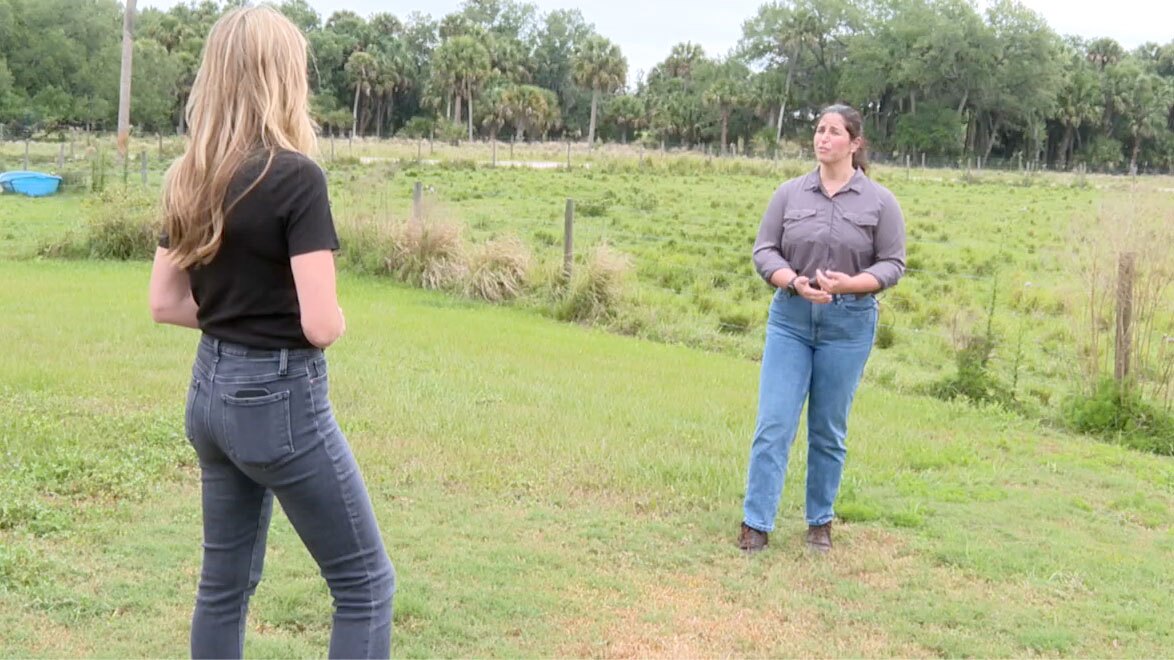WEST PALM BEACH, Fla. — So many people are moving to Florida each day researchers compare it to "adding a new Miami" to the state each year.
The influx of new residents and development adds to the pressure to find balance by preserving wild, natural spaces.
Now, there's a new incentive to do so.
A first-of-its-kind study shows that protecting Florida's Wildlife Corridor stands to protect all of the state's residents and developments by helping stave off the impacts of climate change.
The Florida Wildlife Corridor comprises 18 million acres of land spanning the state made up of ranches, farms, wetlands and natural space.
The majority of the land is further inland in the state, but new research suggests protecting the corridor from development could also protect communities along the coast.

Scientists predict climate change will lead to stronger storms, more frequent wildfires and more extreme flooding.
"By putting these lands into conservation, these large connected lands, it's going to help with our fire protection and our flood protection," Florida Atlantic University Professor Jay Baldwin, who was one of 15 research groups or experts who contributed to the study, said.
Among some of the biggest findings in the study, researchers determined two-thirds of the state's flood plains are in the corridor. By protecting the land in the corridor, researchers say the entire state has more resilience to flooding by preserving the state's natural drainage capabilities.
After Hurricane Irma hit the state in 2017, researchers found areas that reduced wetlands saw a $430 million increase in property damage.
Coastal mangroves and marshes also make up a small fraction of the corridor and protect people and properties from storm surge and erosion.

Researchers also found the corridor protects us from rising temperatures and wildfire risks. By keeping large swaths of open space, fire crews can conduct large controlled burns more easily without putting people or property in danger. Controlled burns lower the risk of wildfires that can destroy communities.
Archbold's Ranch in Highlands County makes up a tiny portion of the wildlife corridor. It's a 10,000-acre ranch where you can truly escape the bustle of Florida's booming coastline.
"You don't hear as many cars. You don't see as many people," Joshua Daskin, the director of conservation for Archbold Biological Station, said.
The ranch is a great sampling of what the state is looking to protect in the wildlife corridor.
"We have over 500 species of plants here. We have over 200 species of birds," Daskin said.
The ranch has photographed bears and panthers trekking through the property.

Ten million acres of the Wildlife Corridor have been preserved and protected from development through conservation easements, but there are 8 million acres that could still be at risk for development. That's why funding for land conservation, researchers say, is crucial for the success of the program, as well as buy-in from ranchers and farmers. Conservation easements allow for large landowners to be paid to give up their development rights on their property.
Meredith Budd, the director of strategic initiatives for the Live Wildly Foundation, funded the research.
"If we can show that the corridor truly is a benefit to not only our water and our wildlife but to people for future generations, that's going to be the key to making sure that we continue to fund protecting the wildlife corridor," Budd said.
Daskin sees the development encroaching near the corridor daily.
"Every day I drive the roads around here, there's another parcel up for sale," Daskin said. "Conserving the corridor doesn't mean we can't grow as a state, but it means we want to do it in smart ways."




